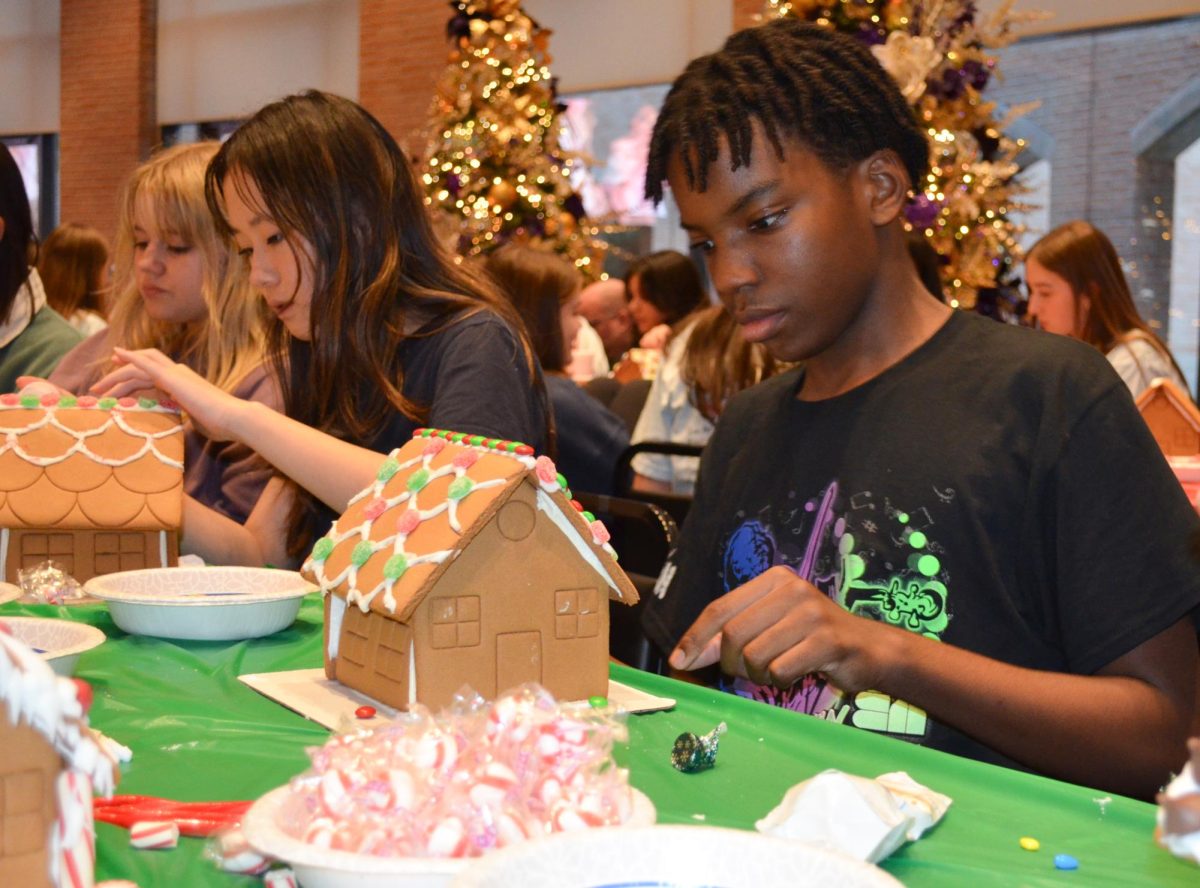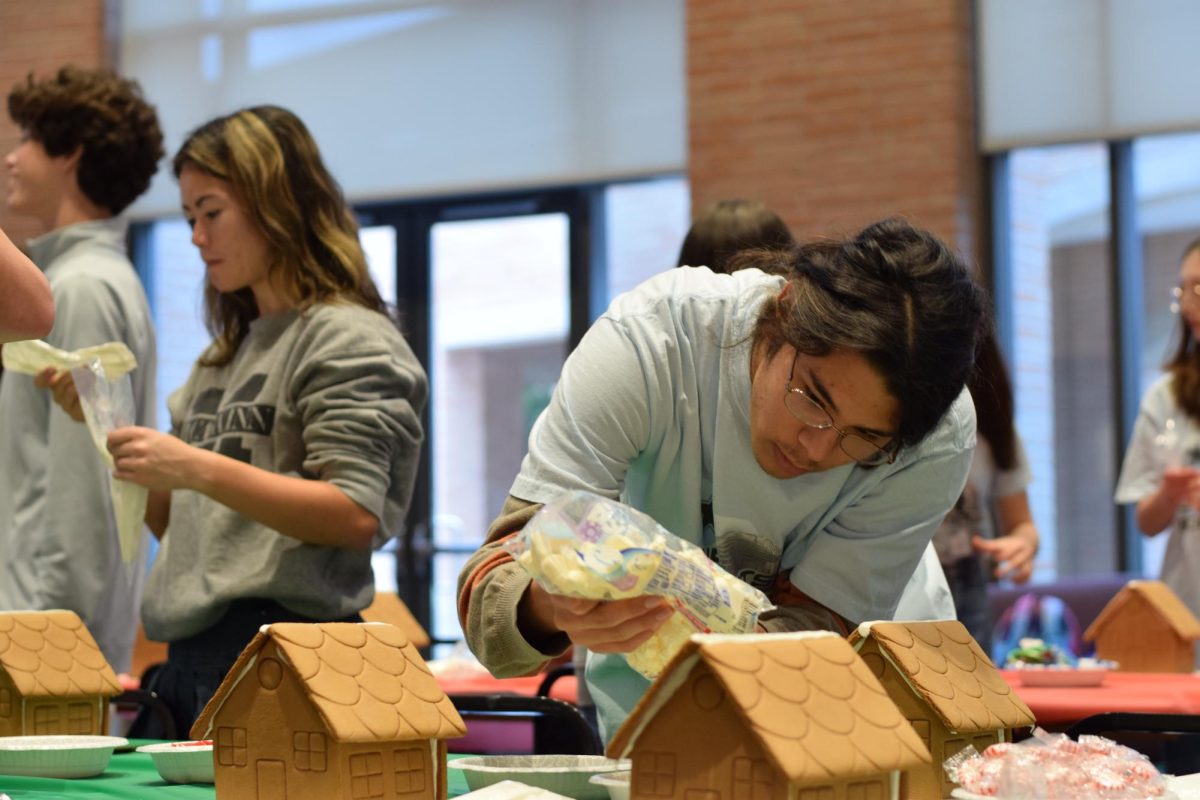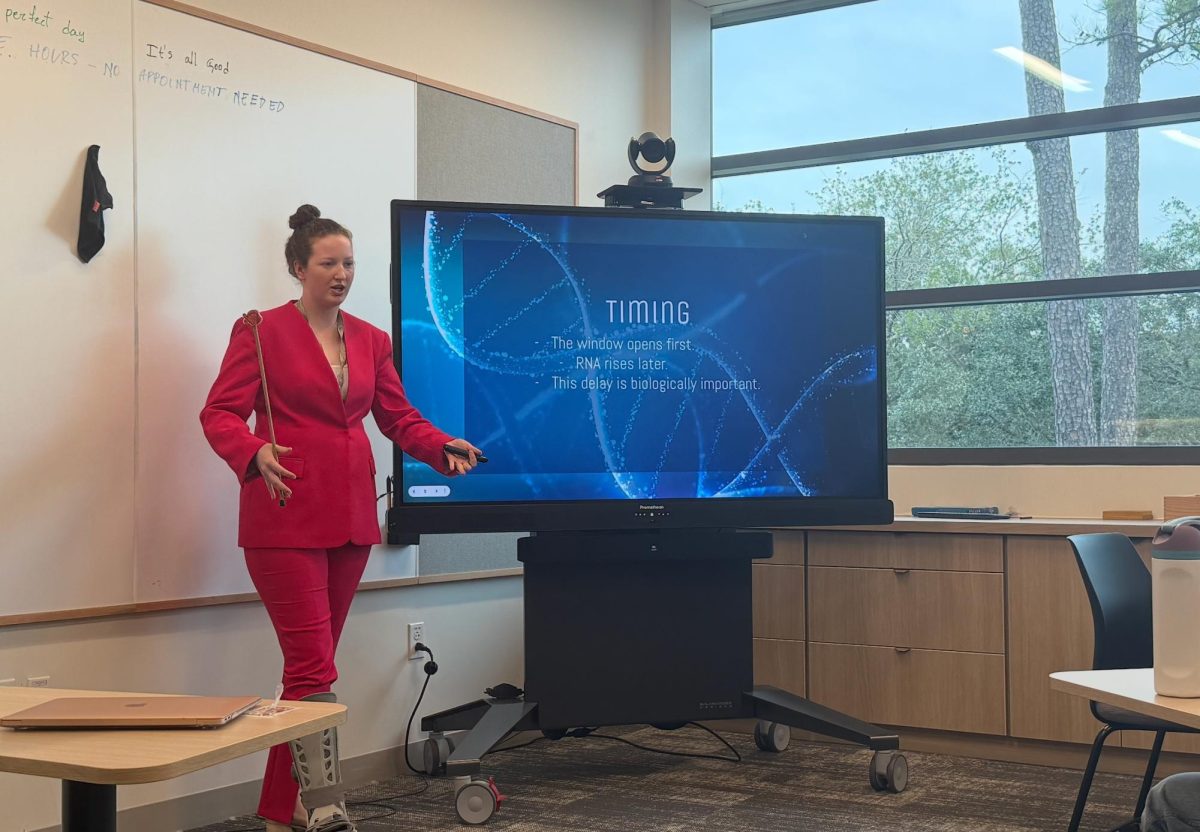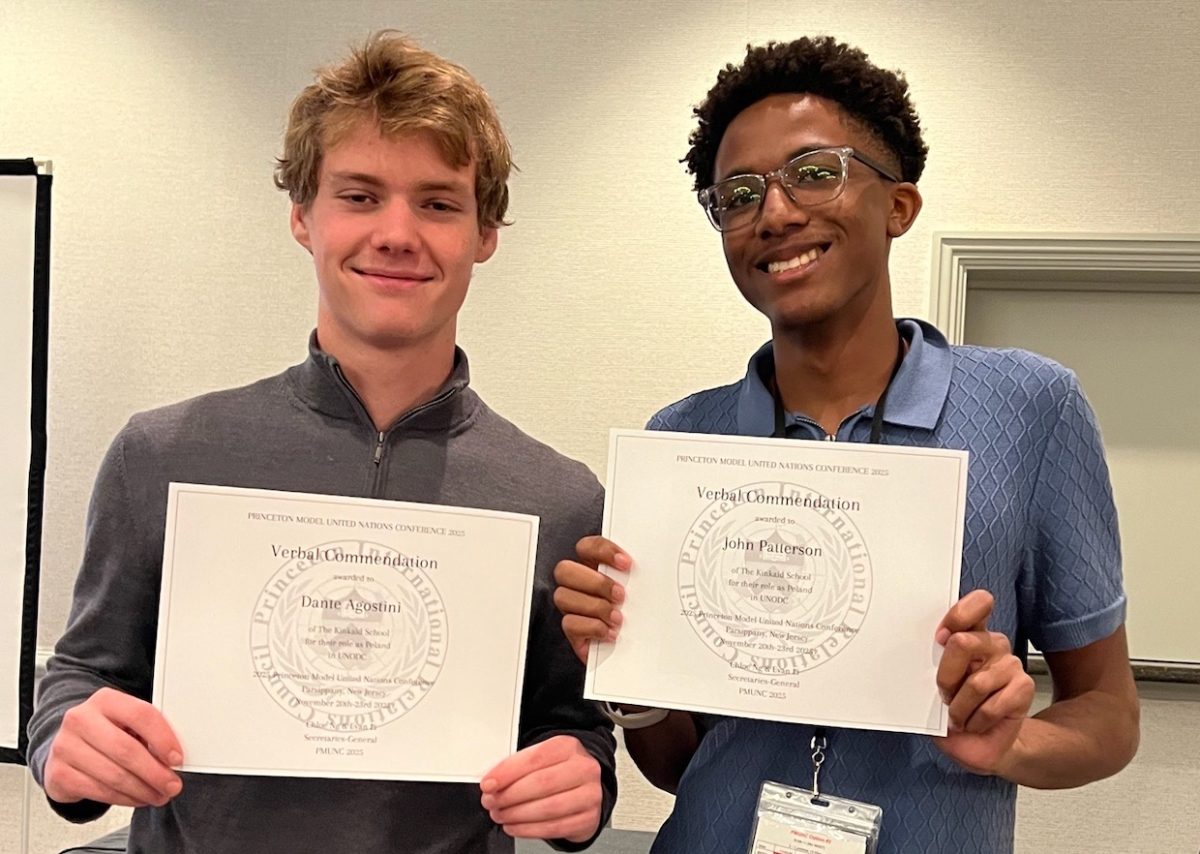[dropcap]Except[/dropcap] for the sound of the maintenance staff at work, the school is mostly silent. There is a lone group of students hunkered at the top of the grand staircase, carefully suspending lengths of wire with magazine clippings over the steps. They are in the process of installing Kinkaid’s first pop-up art installation. They work alongside three faculty members to hang a chandelier made of magazines. Other students are arranging a spray-painted and stenciled sign with the group’s signature. The students clean up any evidence they might have left behind and finally drive home. It is 8:30 p.m.
“Are we meeting in the dark?” one student asked as she entered the dimly-lit photo lab for Eighteen’s first official meeting last week.
“That’s how we came up with the name Eighteen—there were 18 people at the original meeting,” another contributor explained.
The low lighting of the photo lab making the identities of the original 18 members wasn’t deliberate, but it did connect to one of the group’s main goals. “Keeping the group secret and not revealing ourselves adds a whole new level to the project. It keeps the focus on the art and the message we are trying to send and not on the artists,” another contributing artist said.
Ideas were thrown out about what the artists wanted the viewers to take away from the installation. At the end of the meeting, they decided on a theme that would revolve around body image and social standards, particularly those advanced by the media. All members of Eighteen agreed that magazines distorted the view of humans through Photoshop, promoting the unrealistic standards set by advertisements and articles.
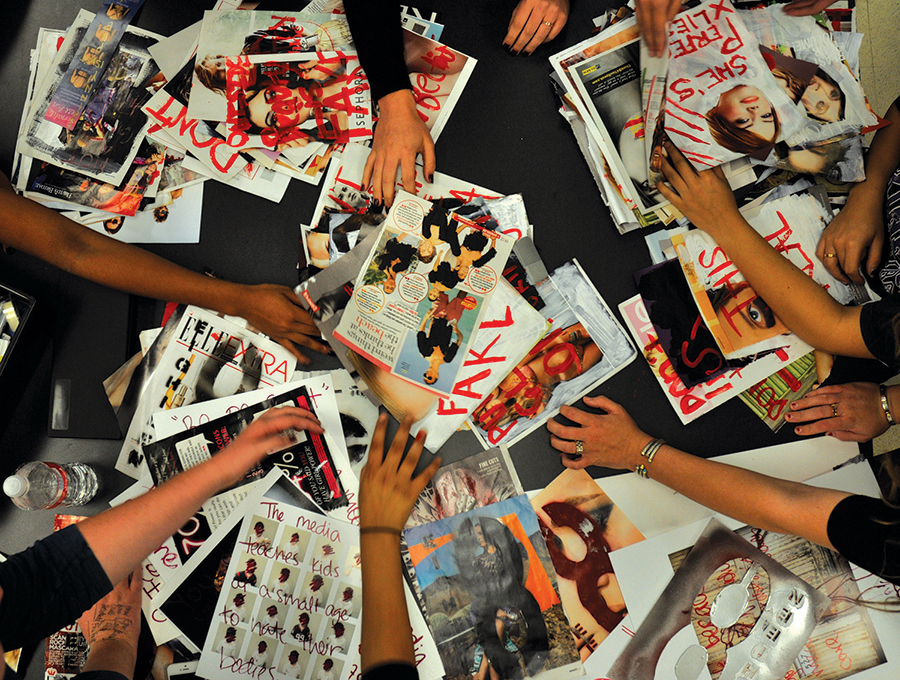
[dropcap]Over[/dropcap] the course of a week, Eighteen carefully selected magazine advertisements and doctored them with unique messages. Some messages pointed out the ridiculousness of airbrushed and Photoshopped models, and others called for “new eyes” with which to view the media and our own bodies.
Members of the group even came up to school over the weekend in order to paint more magazine pages and assemble materials needed for the project. After all their hard work, Eighteen needed to ensure that people would view their work and really think about the message behind the art.
“We picked the location of the installation because most students walk by the grand staircase every day. Our goal is for a bunch of people to see it,” said another member. Eighteen also placed their spray-painted logo throughout the Upper School on lockers, windows, in rooms, and on walls.
“Our goal is to spread awareness. At a young age, the idea of being skinny and pretty is engraved in our minds,” one contributor elaborated. “When people see this exhibit, they will see that they are not alone. This will hit home for girls especially because personally, I am a girl battling an eating disorder, and I hope that the installation will help bring attention to changing how the way the media portrays being beautiful.”
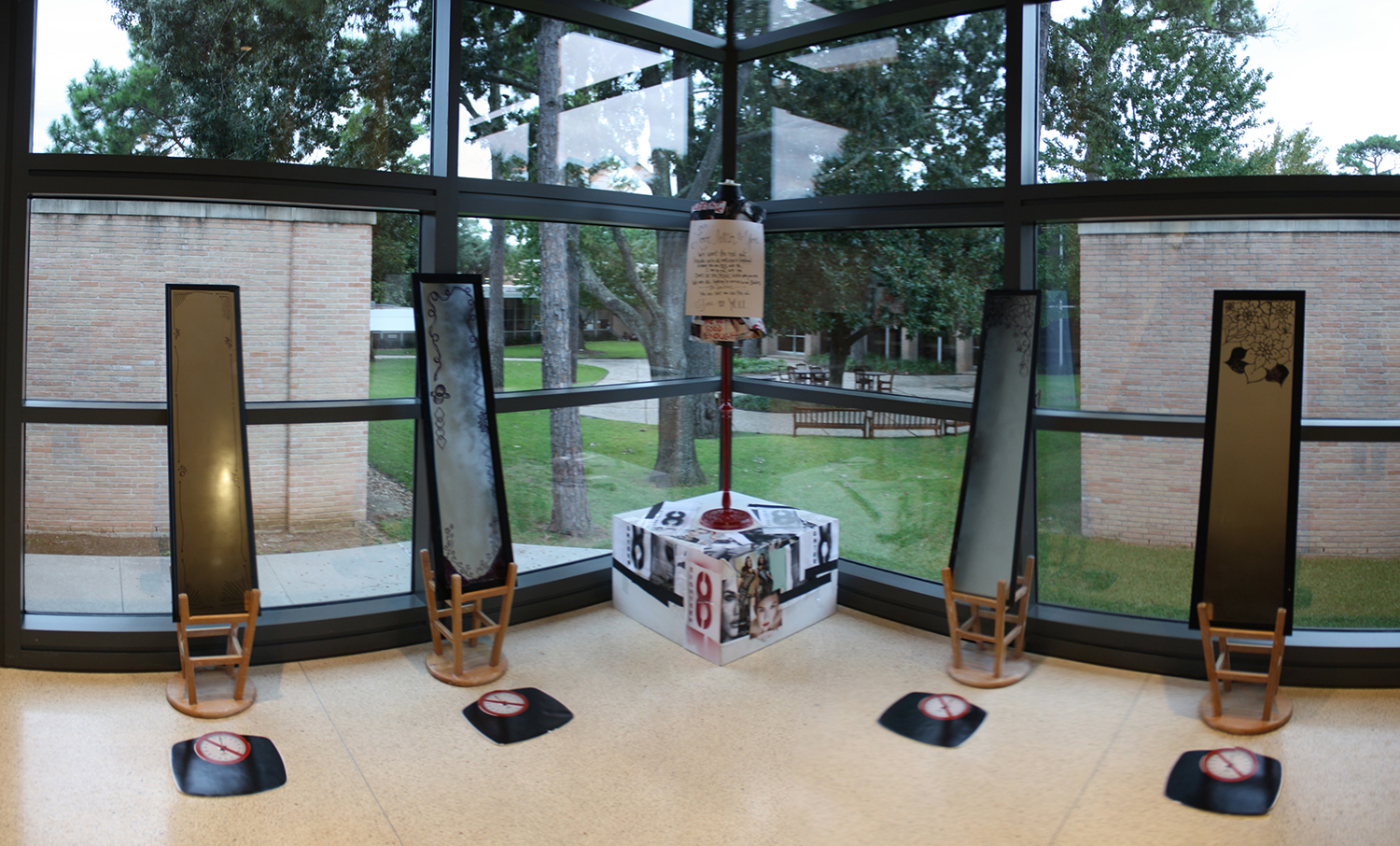
[dropcap]As[/dropcap] viewers walk up the steps of the grandstaircase, they can view the hand-made chandelier suspended from above. Walking around the chandelier will reveal different messages scrawled on each magazine page. Draped from the sides of the stairs are wires with additional messaged pages. “We wanted to get as many messages written on magazines as we could because the more messages and the bigger the piece looked, the more appealing it would be to the viewers,” a contributor explains.
The mirrors placed along the windows are coated with spray paint, speaking to the fact that some people perceive a distorted reflection or have a hard time seeing themselves clearly. At the base of each mirror is a scale with the numbers crossed out.
“I really appreciate this piece. I think it’s so cool that you can walk around it and see a different message on every magazine page. I think it will encourage people to reconsider body image in the media,” Aine Carolan (11) said about the installation.
The Grand Staircase was carefully selected because of its visibility. Located in the administrative building, Lower, Middle, and Upper School students pass by it daily.
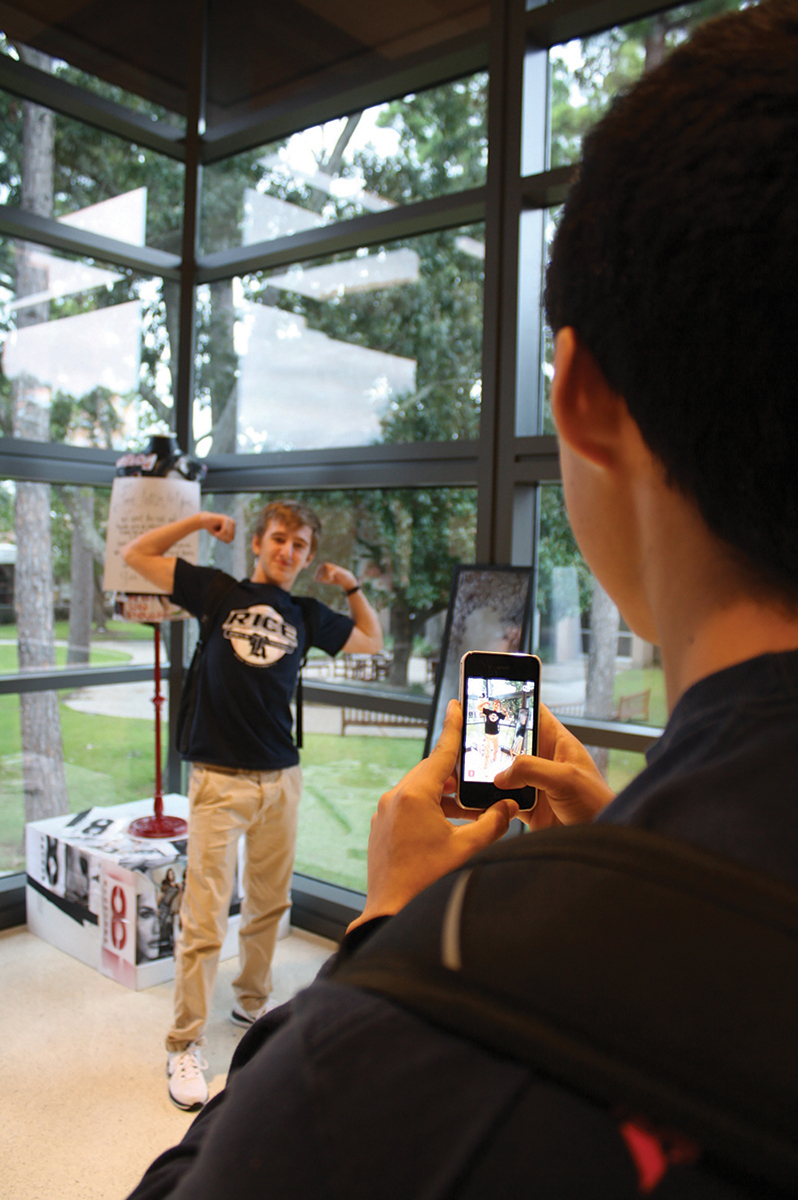
Hobbes Reynolds (11) said that he never expected to see art like this come from his fellow classmates. “I think it’s awesome that they are doing this, and I really hope that this continues throughout the year,” said Reynolds.
“I wasn’t expecting this because it was so unexpected and not in the Kinkaid norm for art to just appear overnight…especially art like that,” said Jillian Bass (11). She interpreted the installation as showing what society believes is beautiful. “They are saying you shouldn’t try and be like these perfect people. Just be yourself.”
This article was first published in Vol. 68, Issue 1, on Friday, September 26, 2014 | Photos by Halle Brazda



